Stone Houses, Black Street, Martham (sometimes called Flint Houses).

There are some intriguing builders plaques on four houses at what is now 55, 57, 59 & 61 Black Street. These are the plaques:-
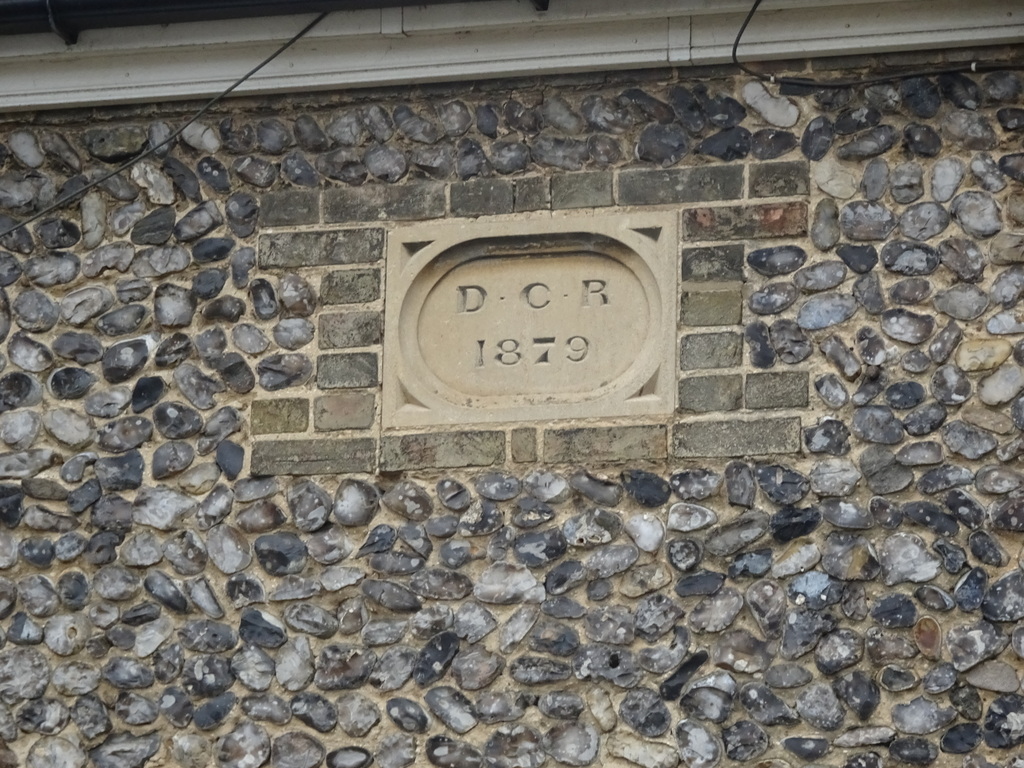
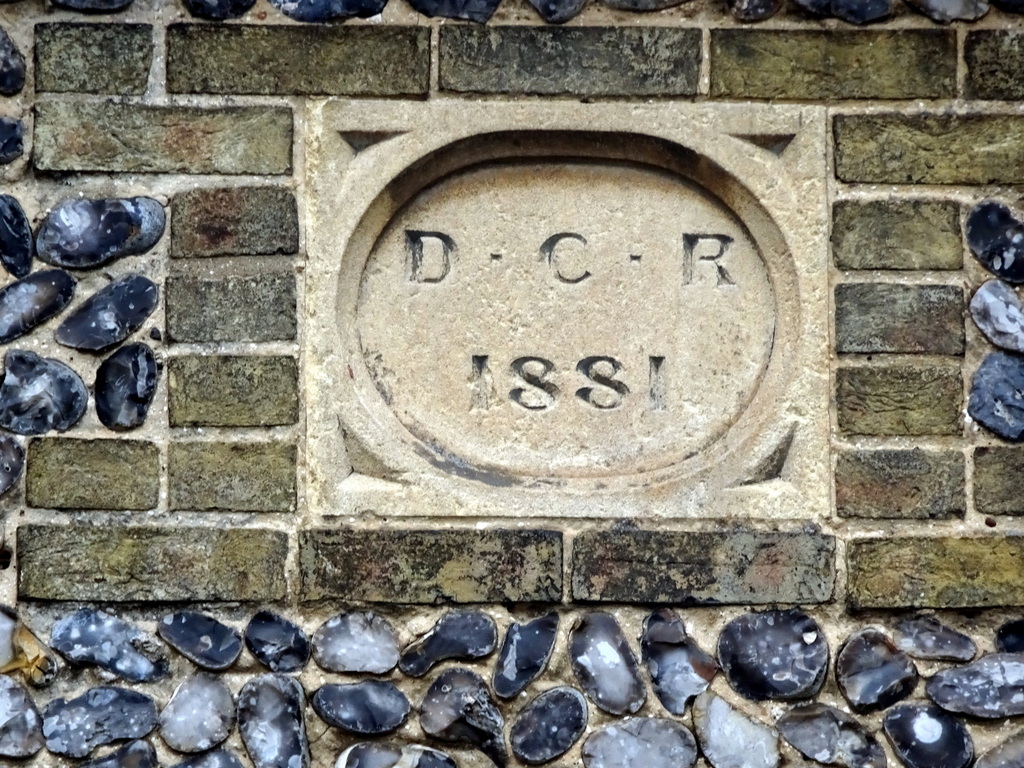
A bit of research reveals that they were originally called Stone Houses and the plaques were inserted by the builder and there is a little story behind them. They were included there by the builder Daniel Rust (1820 to 1906). He was the son of James Rust & Elizabeth, nee Powley. The Rust family go back to the mid-18th century in Martham. Daniel was mainly a millwright and lived with his parents, until he was about 30, at Bay Tree Cottage, Staithe Road. In 1850 Daniel married Charlotte Pearce at St Mary’s and they went on to have three children but unfortunately their first child called Ann died age 3 in 1853. In the same year they had a second daughter they called Ellen Charlotte Rust and in 1854 a son also named Daniel was born.
By 1879 when the first pair of houses were built Daniel Jnr. had grown up and had a successful career of his own as a coal merchant, millwright and builder.
The daughter, Ellen, was a spinster and school mistress. She remained a spinster all her life and lived with her father until his death. It is clear from the Deeds of one of the houses that Daniel Snr. and his daughter were the joint owners of the properties and upon his death in 1906 Daniel left the houses to his daughter, rather than his son, perhaps as a way of providing for her future as a single women whilst his wife continued to be entitled to any income from rents.
When the houses were first built each pair shared a passage to the rear of the properties and had a right to take water from a rainwater pump and well to the rear of the properties.
In 1975 Norfolk County Council Highways Department decided it would carry out footway improvements to the west side of Black Street and made a compulsory purchase order requiring each of the four owners of Stone Houses to give up a small part of their front garden so that a path could be built. The Council compensated each owner to the tune of £180 plus it built a new front wall for them 3½ feet high and replaced their front gates.
Some of the owners or occupiers of the houses have been:
No1 (later became No55 Black Street)
Daniel Rust and his daughter Ellen Charlotte Rust c1879.
William & Lydia Kirkland and their son William in 1891.
John & Thirza Lake (general hawker) in 1911.
Agnes Dack and her daughter Daisy in 1939.
George Dove c1959.
Mrs Buck c 2015.
No2 (later became No57 Black Street)
Daniel Rust and his daughter Ellen Charlotte Rust c1879 to 1928.
William & Eliza Hulme (schoolmaster plus large family) in 1891 also No3.
William & Eliza Hulme (schoolmaster plus family) in 1901.
Arthur & Herbert Jeary (brothers) before 1928.
Alfred & Beryl Watson 1928 to 1959. In 1928 they purchased the house for £270.
No3 (later became No59 Black Street)
Daniel Rust and his daughter Ellen Charlotte Rust c1881.
William & Eliza Hulme (schoolmaster plus large family) in 1891 also No2.
Mrs Sarah Beckett in 1901.
Philip & Elsie Brown in 1939.
No4 (later became No61 Black Street)
Daniel Rust Snr. and his daughter Ellen Charlotte Rust c1881.
Edward & Emily England and their son Edward in 1891.
Daniel Rust Jnr & his wife Louisa in 1901.
Ethel Hicks and her daughter Joan in 1939.
A remaining mystery is a small plaque between the semi detached pairs on the gable end wall which says “John Wilgris” with an indistinct date. It is shown below. Does anyone know why it is there?
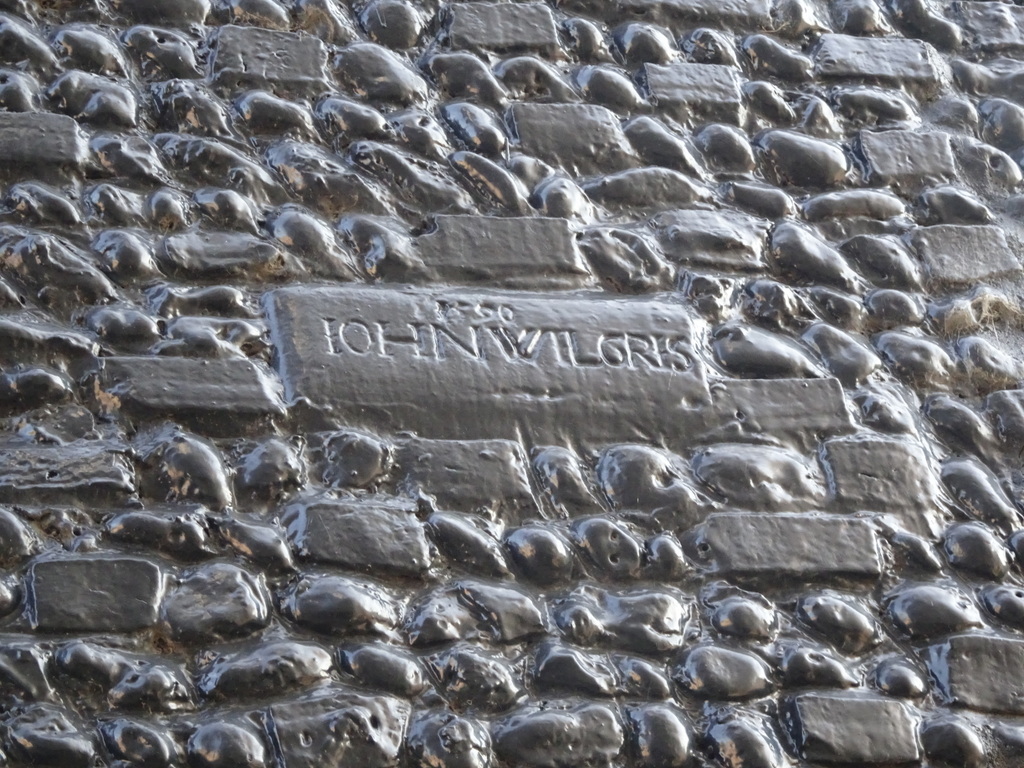
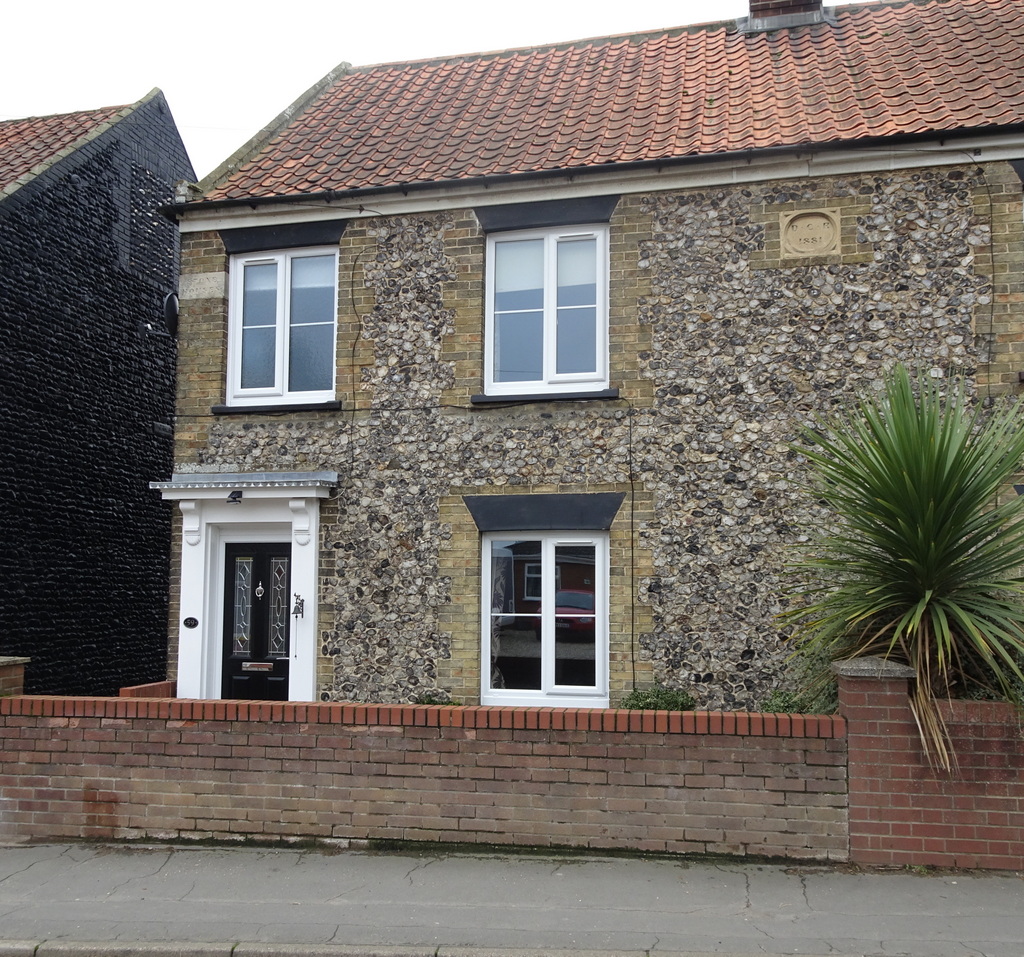
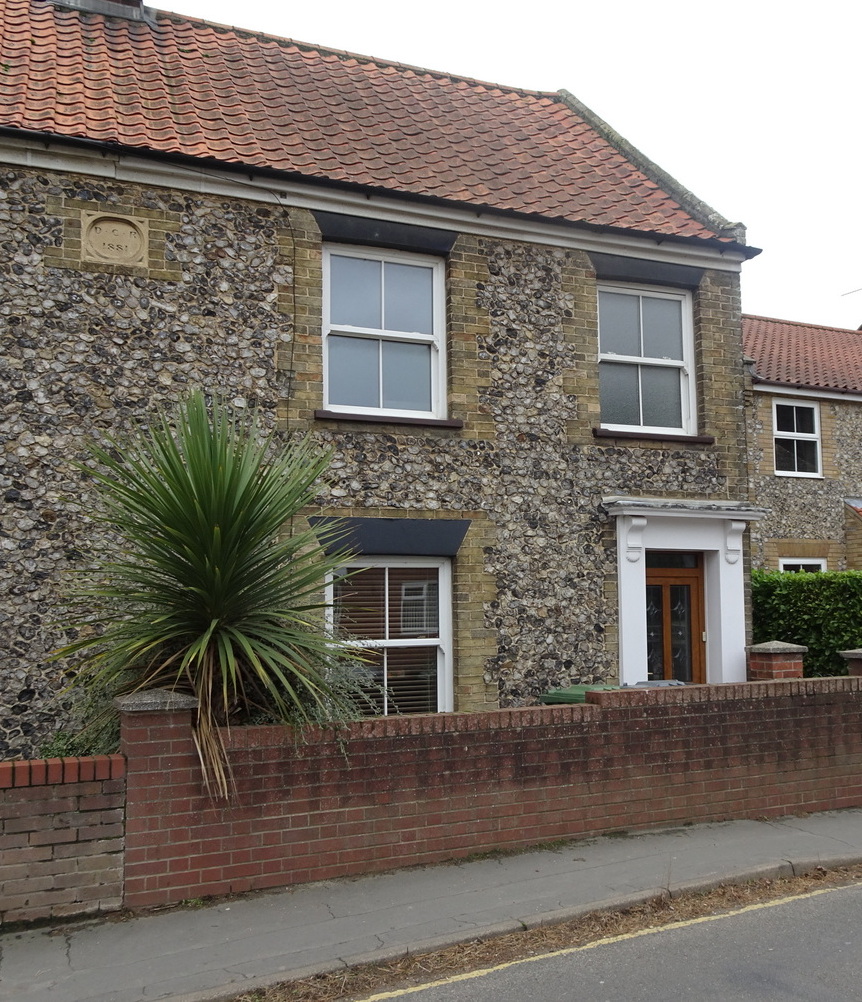
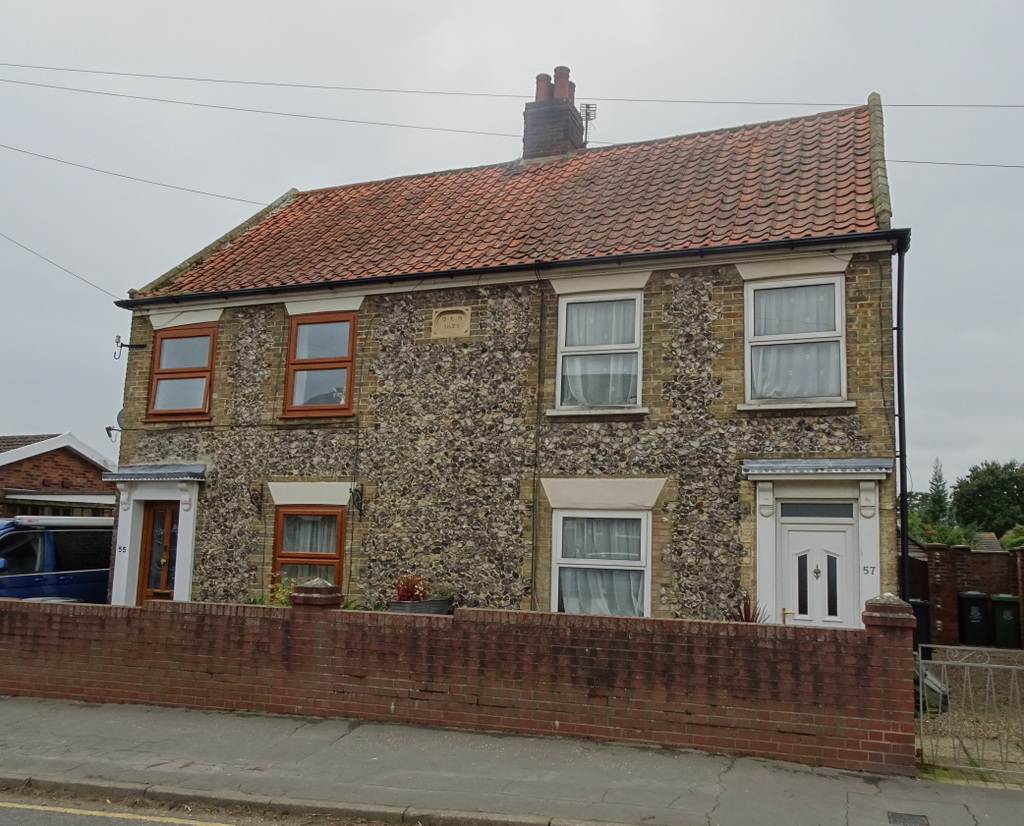
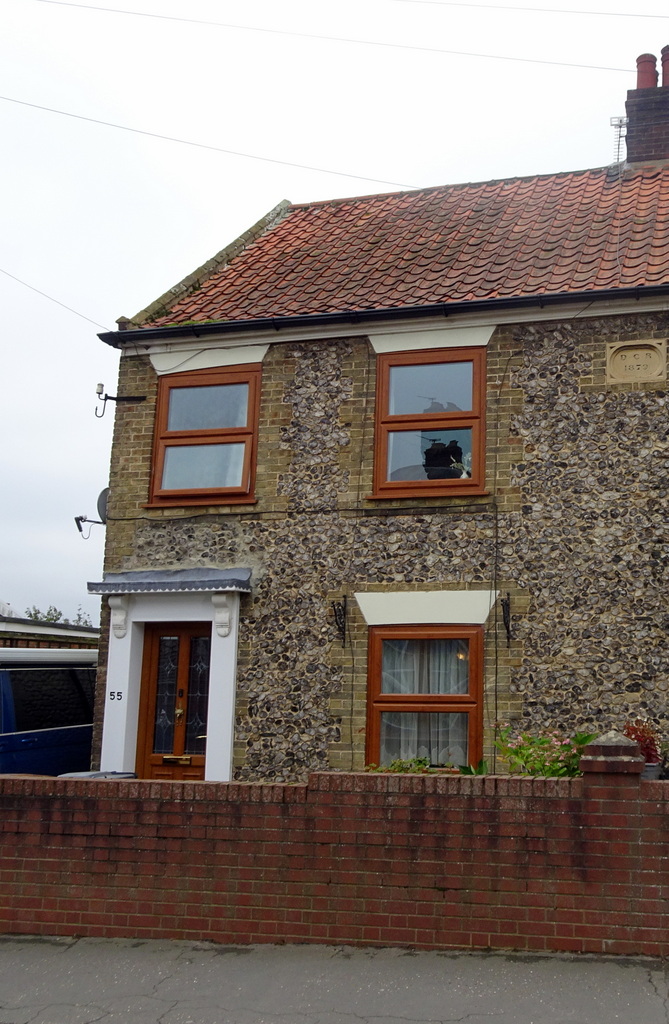
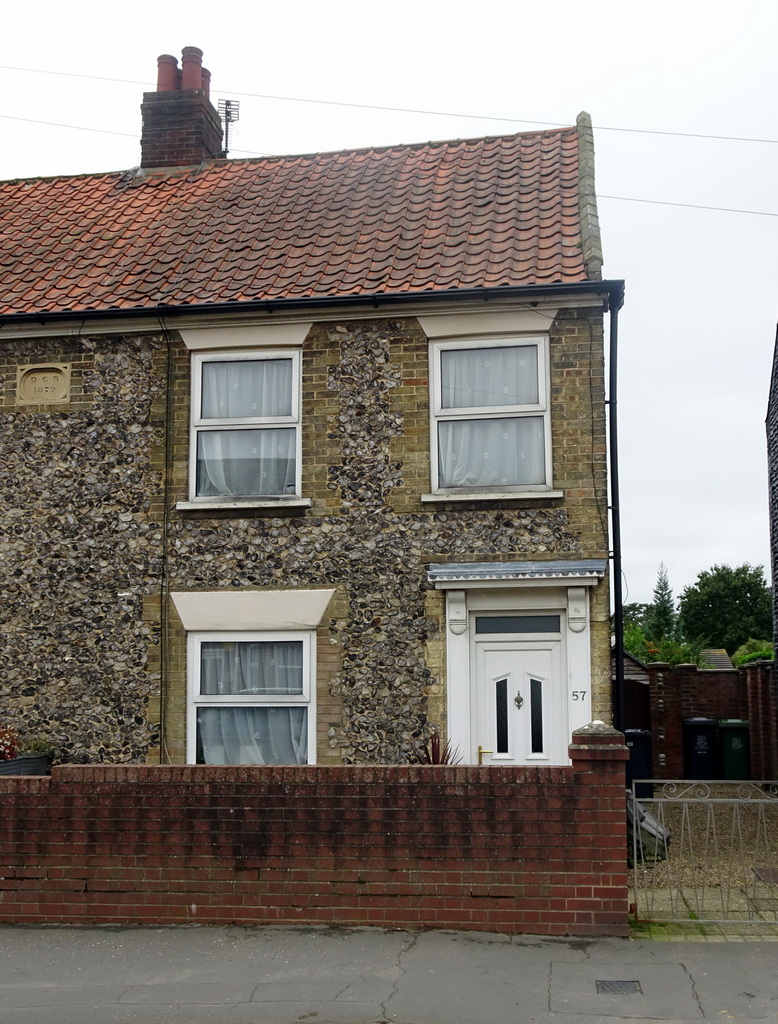
Since I wrote this page local Martham historian Ann Meakin has contacted me with the following theory. Between 1855-1861 there was a major restoration of Martham Church. At that time the dilapidated state of the church was so serious that the roof of the nave and the walls supporting the clerestory windows had to be replaced and the chancel had to be completely demolished and a new one built. It was a huge and costly job. So, what happened to the facing flints from the demolished chancel walls? Before they built the replacement chancel, they would have had to clear away the flint rubble of the old one. Probably they carted it away and dumped it in a heap on the nearest convenient land which at that time was a brick ground across Black Street opposite the church on land that later became Kirby’s lorry yard and today is Oak Tree Close. The brick ground was run by James Linford until he died in 1877 and the site was sold to Edwin Kirby who amongst other things was a brick merchant. Perhaps this left a heap of flints there readily available for use. We have to ask ourselves if it can really be just a coincidence that two pairs of semi-detached houses were built right next door to the brick yard in 1879/1881 of quality knapped flint?